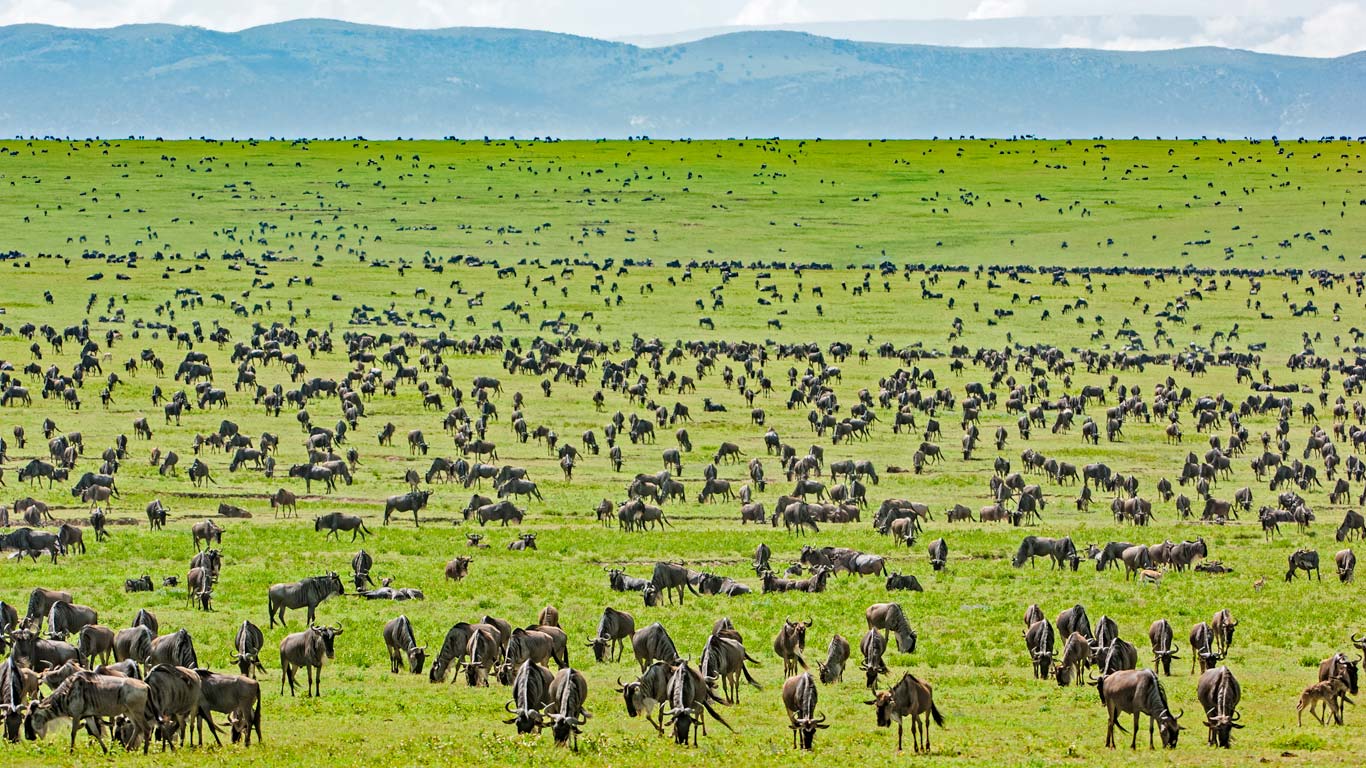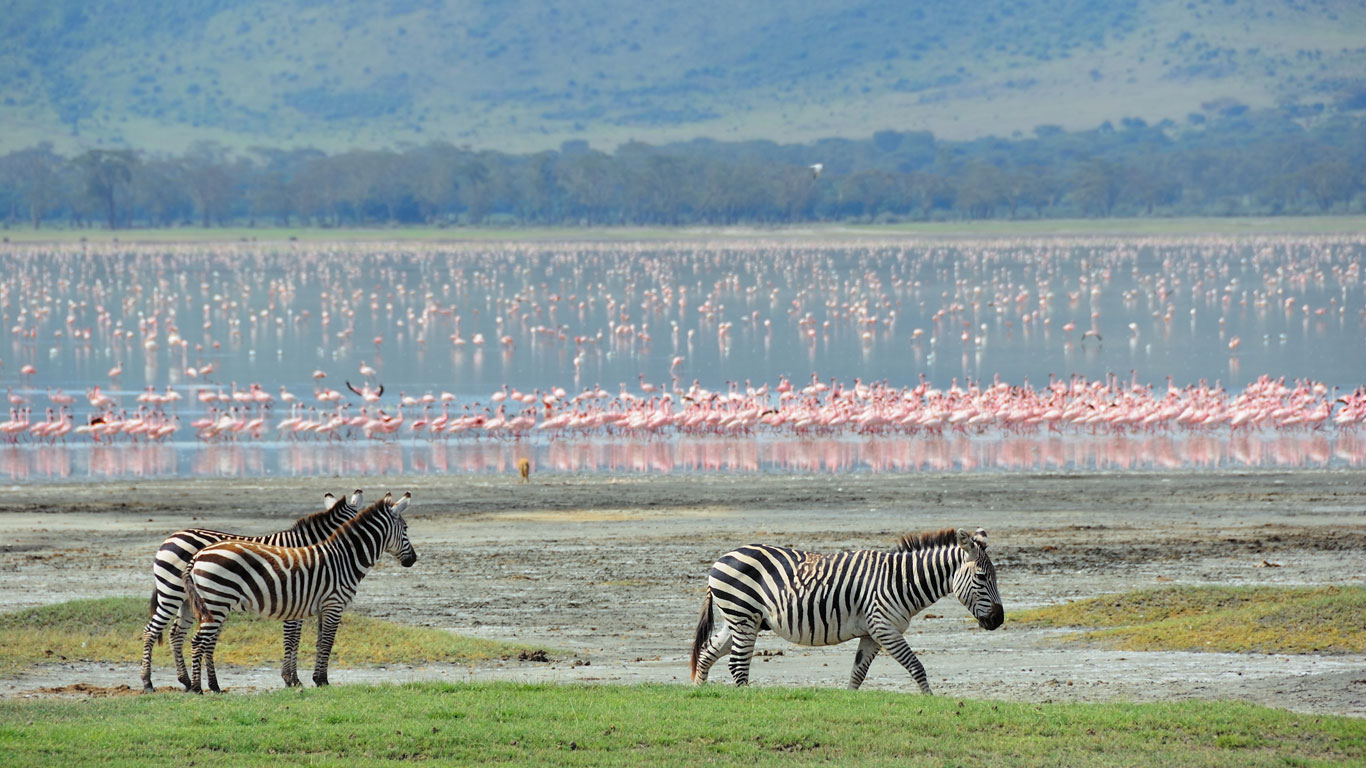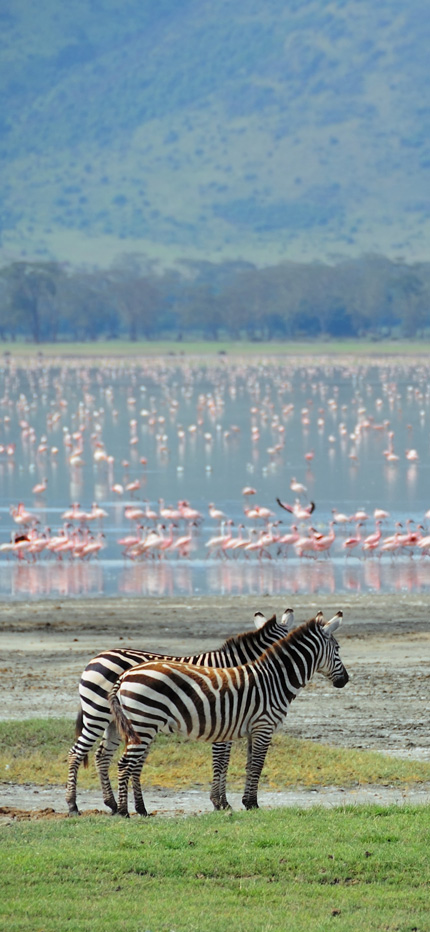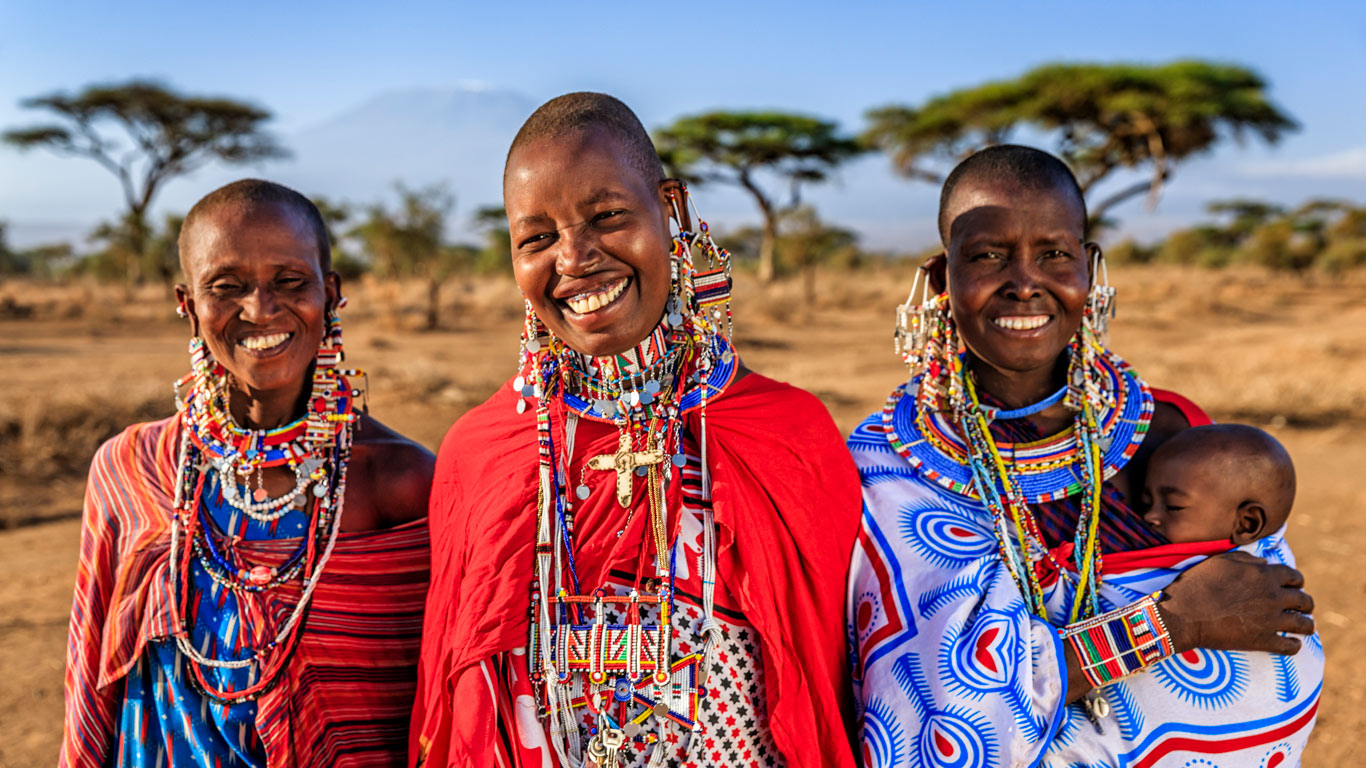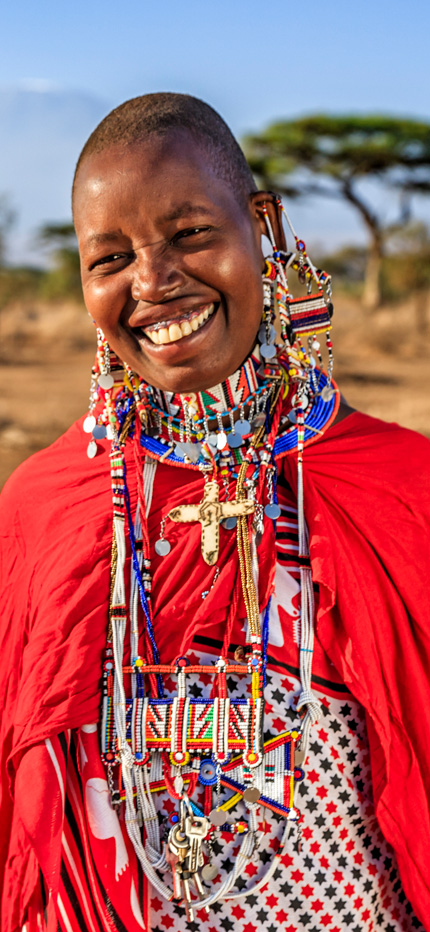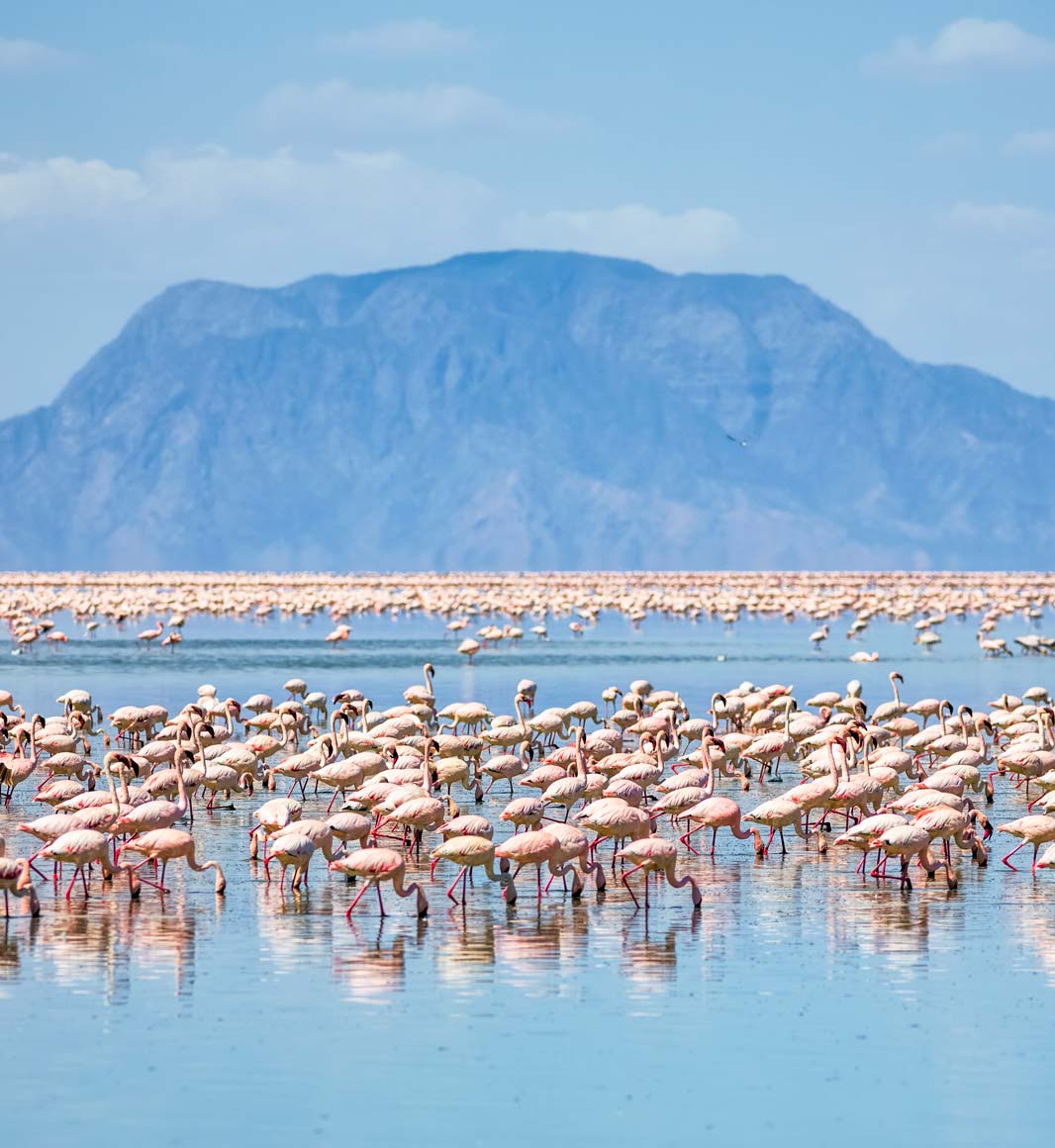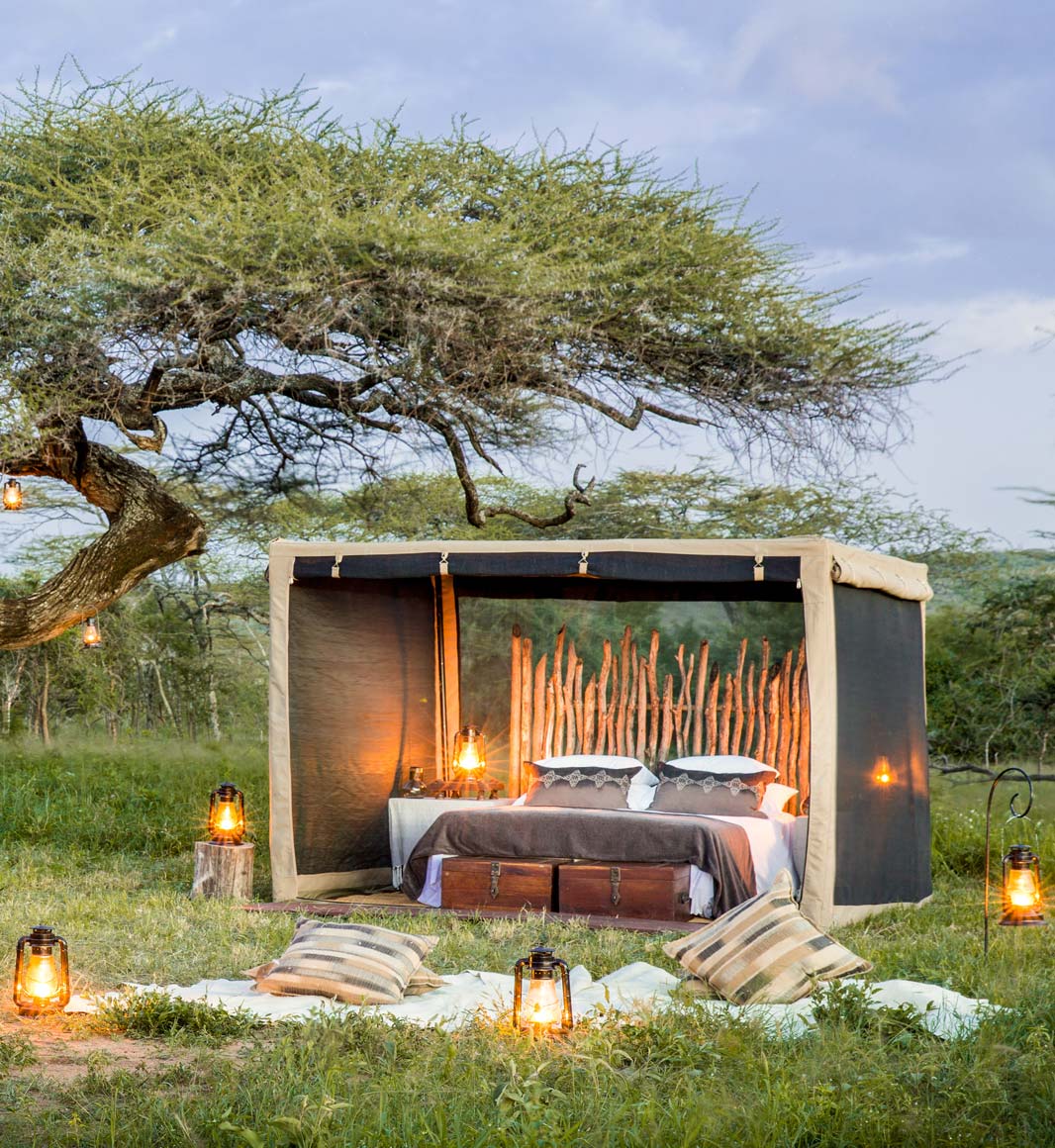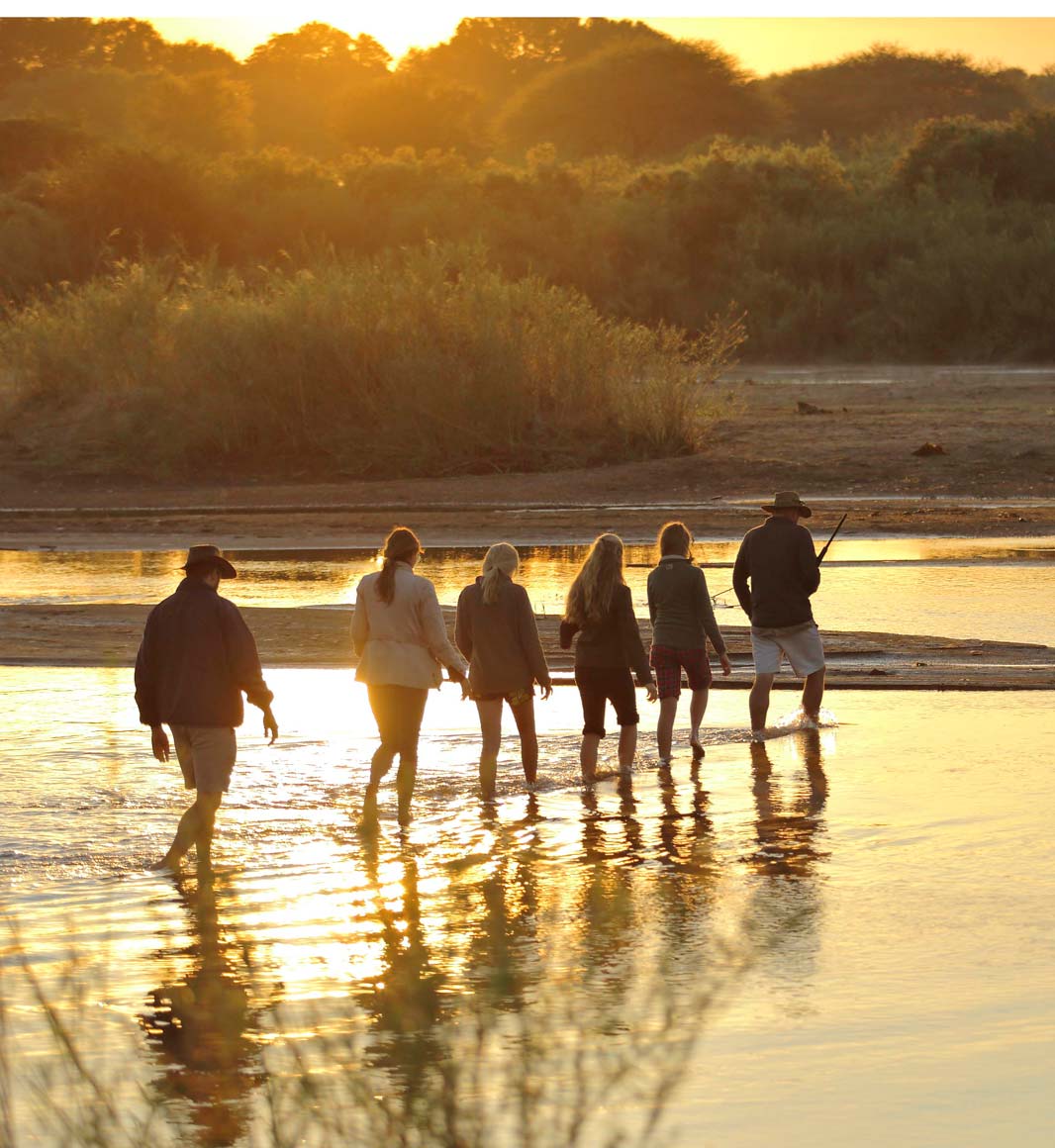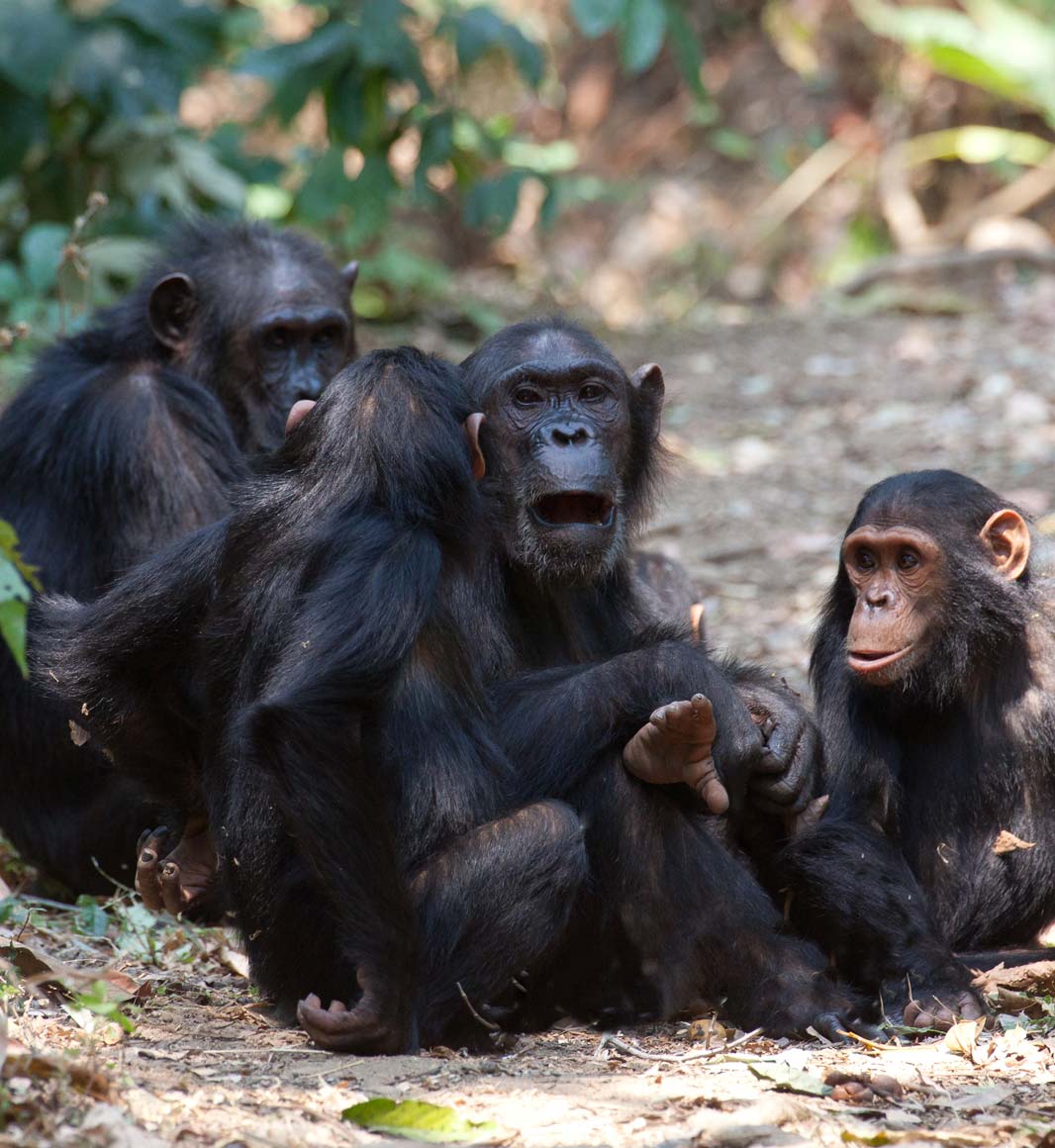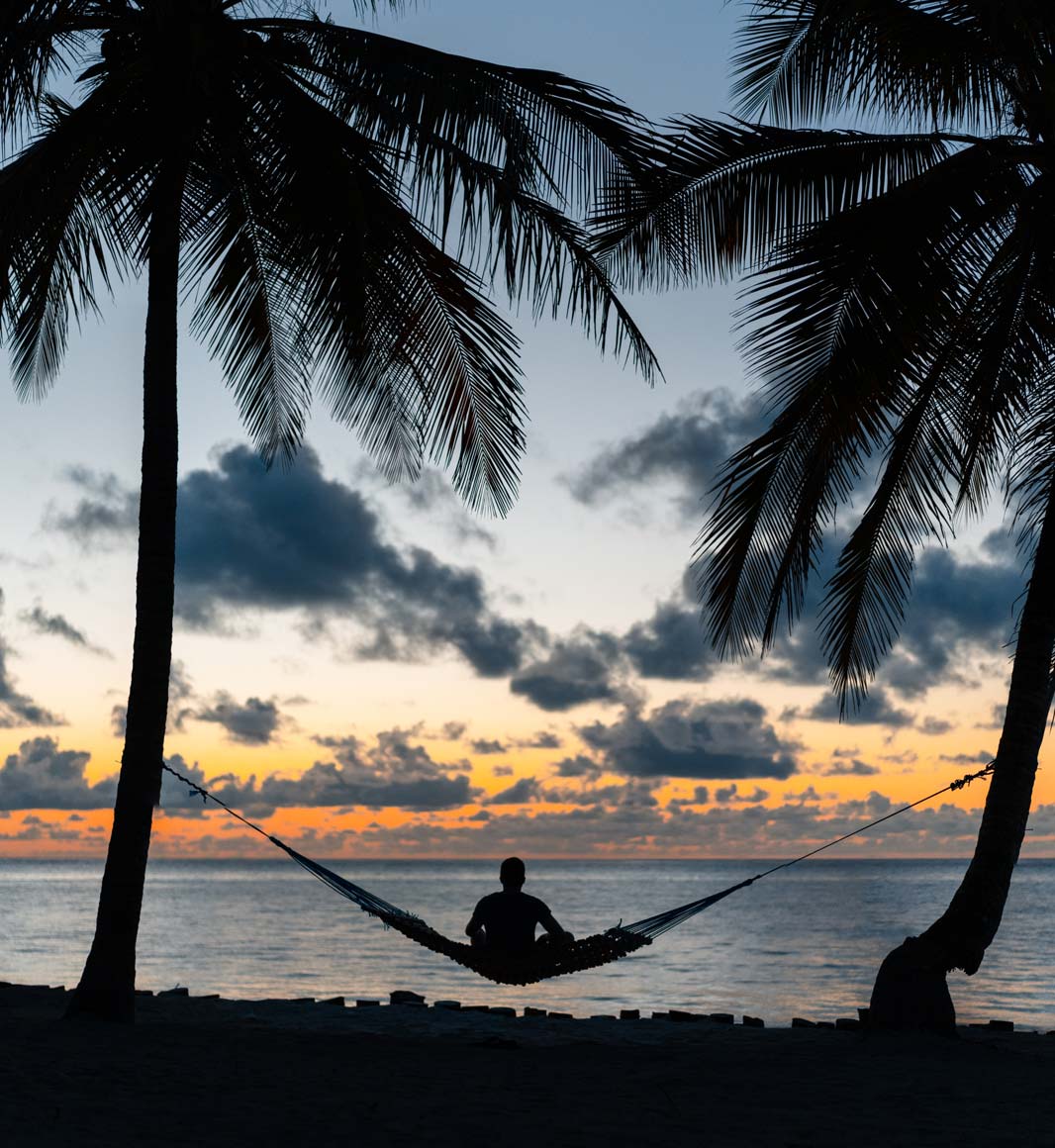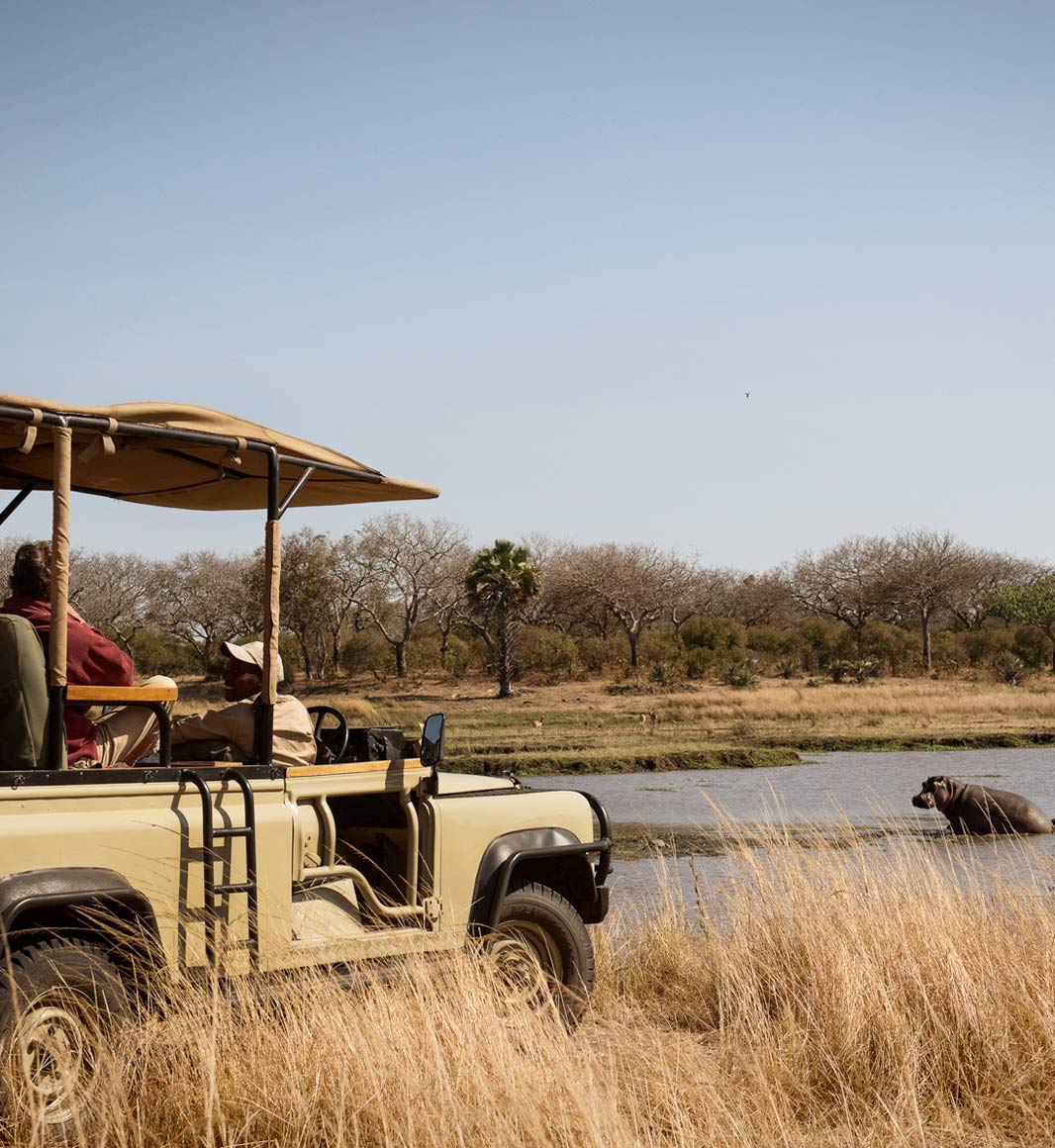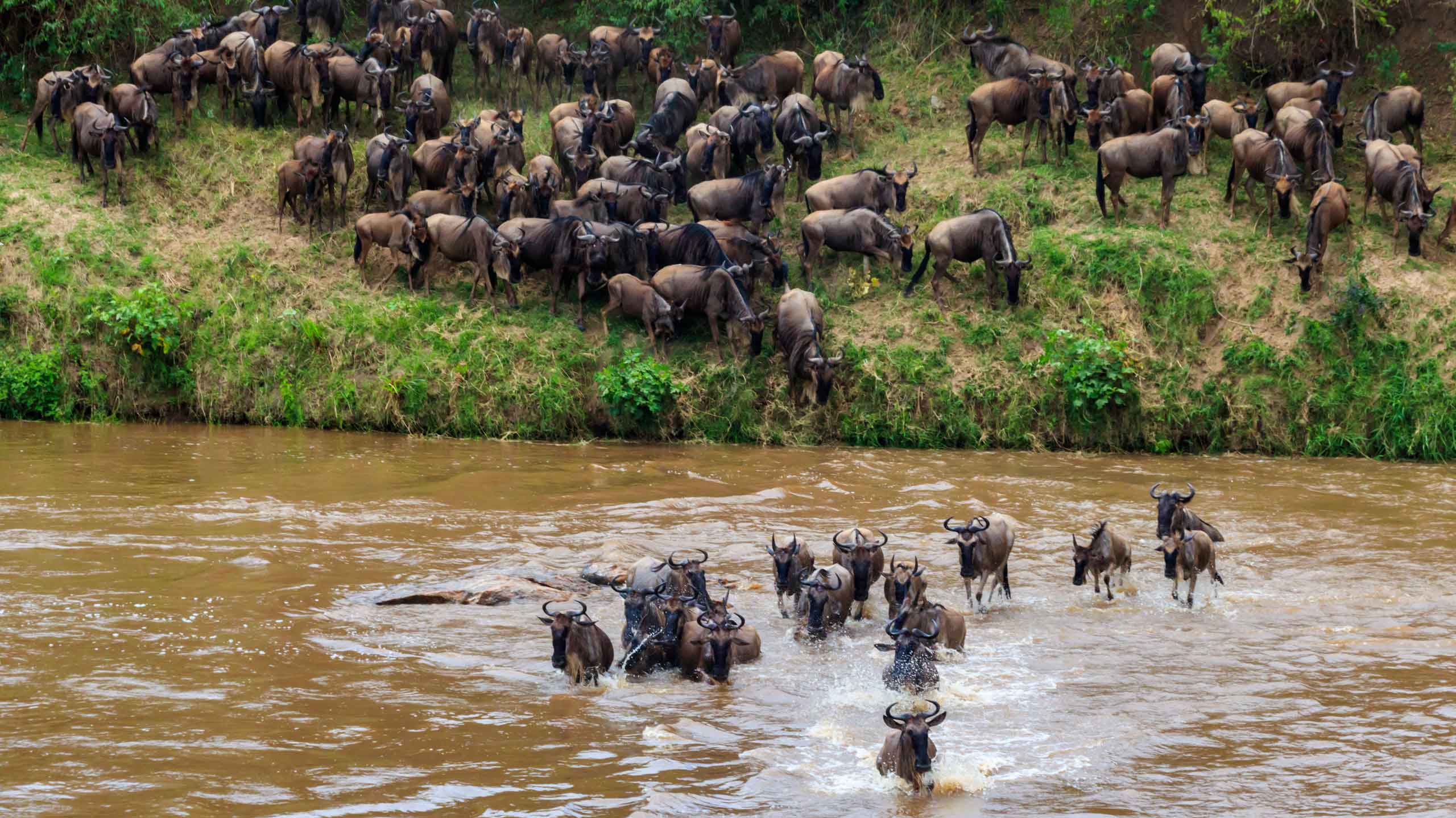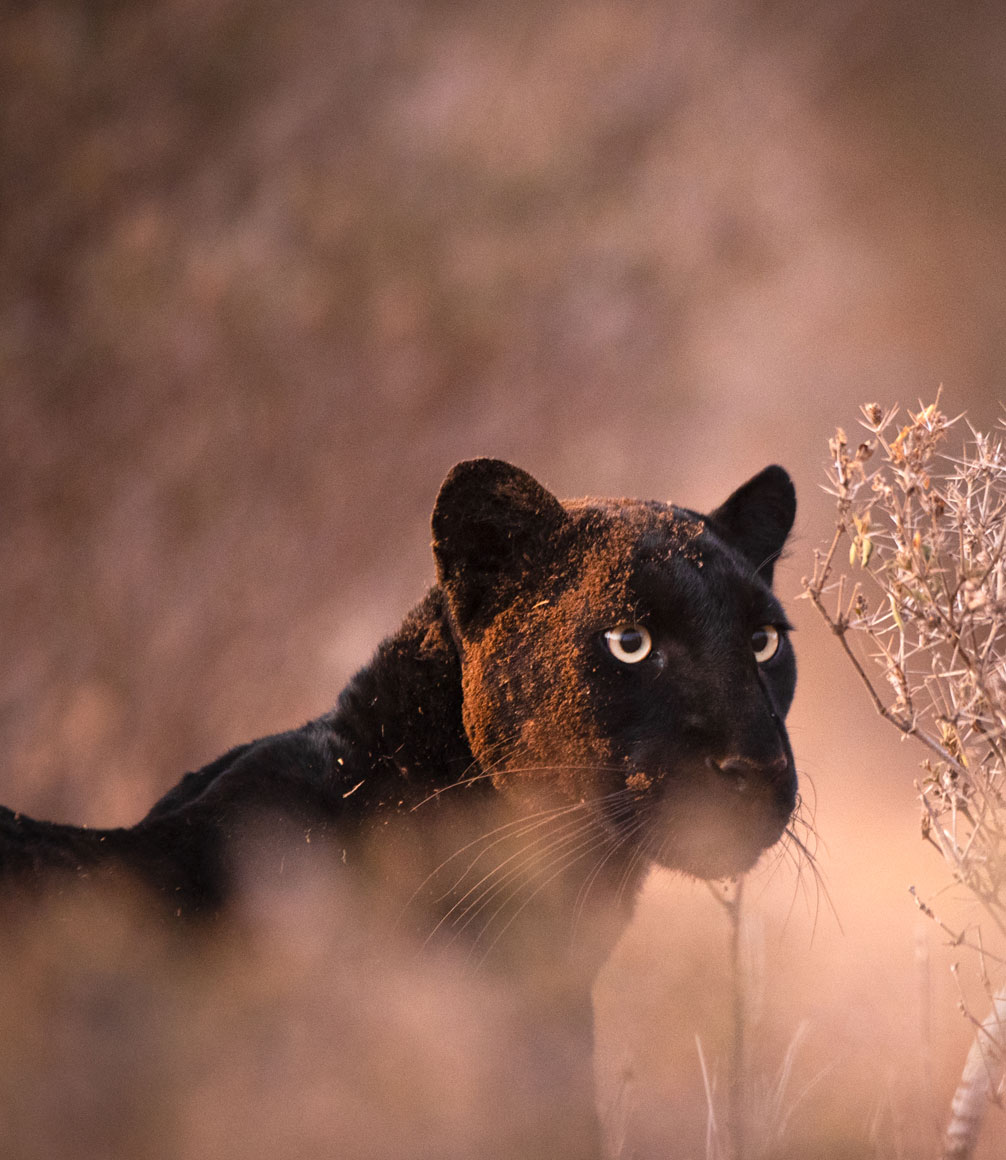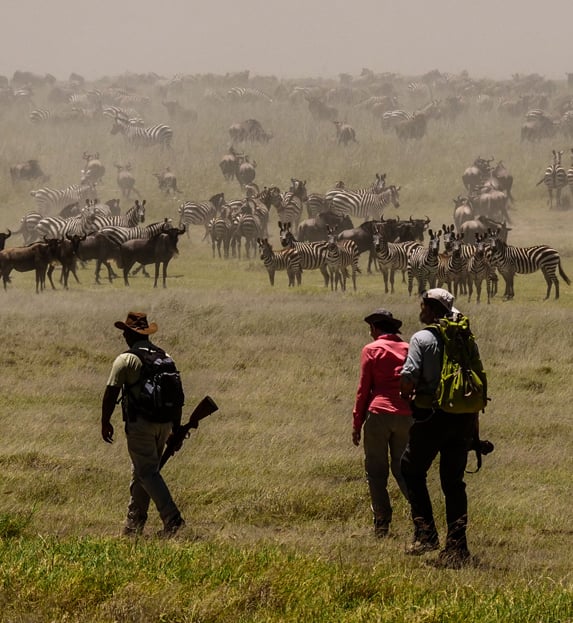Home to the colossal heights of Kilimanjaro, one of nature’s greatest phenomena: the world-famous Great Migration, and vast national parks roamed by a spectacular array of wildlife, Tanzania is rightfully one of Africa’s most dazzling destinations.
From the great lakes in western Tanzania to the riverine forests and endless savannah plains, the largest country in East Africa has some of the most important national parks in the world, with the highest concentration of animals on the continent. The country’s main draws are popular for good reason. In the north, witness the Great Migration spectacle in the world-renowned Serengeti National Park, where over two million blue wildebeest, zebra and gazelle follow the rains whilst attracting predators during their treacherous journey. Part of the larger Serengeti-Mara ecosystem, this region is home to the ‘Big Five’ and is one of the most protected ecosystems on earth.
Nearby is the world’s biggest intact volcanic caldera at Ngorongoro Crater. Here you’ll discover a wide variety of animals from black rhinos to prowling lions and masses of flamingoes heading to the vast permanent water source on the crater lake. For thrill-seekers looking for the ultimate expedition, venture to the challenging spectacular snow-capped Mount Kilimanjaro.
Highlights of a Tanzania Luxury Holiday
"After wildlife safaris and far-flung hiking adventures across the country, indulge in some relaxed downtime just off the east coast of Tanzania."
Having spent time living here, we can offer experiences well beyond the tourist path. Take the epic Great North Tanzania trek from the Empakaai Highlands to Lake Natron staying in mobile camps during a remote adventure in the Rift Valley. Experience warm cultural interactions with the Maasai and Samburu tribes who are synonymous with this part of Africa during a thrilling safari. Embark on an exhilarating helicopter ride to an exclusive camp in the Ndutu Conservancy for game drives and walking tours with world-class private guides. Sip champagne on the rim of Ol Doinyo Lengai, an active volcano in northern Tanzania whilst savouring the scenic views.
Further south, enjoy fly camping and a wide variety of experiences available in Nyerere National Park and Ruaha – lands filled with expansive grasslands and ancient baobabs dotted across the horizon. Established by the Tanzanian Government in 2019, this park is less frequented by tourists with the resident wildlife your only company at sunset. Watch the soaring displays of notable birds including African harrier hawks and grey-headed kingfishers flitting around before sundowner drinks beneath vast starry skies.
If remote locations and rare wildlife are your preference, head west to join recommended local guides in the Mahale Mountains to observe wild chimpanzees in their natural habitat. After wildlife safaris and far-flung hiking adventures across the country, indulge in some relaxed downtime just off the east coast of Tanzania on the spice islands of Zanzibar, Pemba and Mafia in secluded tropical luxury.
We have access to the finest accommodation options – from luxury private camps in the Serengeti to palm-fringed beach villas in Zanzibar. If you’re visiting to witness the calving of the Great Migration, then the prime months for the southern Serengeti are January to March. Alternatively, visit during the long dry season from July to September for wildlife safaris, mountain treks and tropical beach retreats.
Ready to take the road less travelled?
